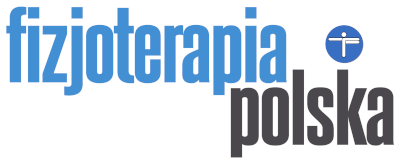The impact of body composition disorders on the quality of life of patients with chronic obstructive pulmonary disease
Marzena Dorosz, Katarzyna Bogacz, Marta Gołdyn-Pastuszka, Marcin Krajczy, Anna Szczegielniak, Jacek Łuniewski, Jan Szczegielniak
Marzena Dorosz, Katarzyna Bogacz, Marta Gołdyn-Pastuszka, Marcin Krajczy, Anna Szczegielniak, Jacek Łuniewski, Jan Szczegielniak – The impact of body composition disorders on the quality of life of patients with chronic obstructive pulmonary disease. Fizjoterapia Polska 2022; 22(5); 56-69
DOI: https://doi.org/10.56984/8ZG20AXT7
Introduction. COPD is a chronic inflammatory disease that constitutes a significant public health problem. It is characterized by not fully reversible, progressive limitation of airflow through the airways. In addition to the harmful pulmonary effects, COPD manifests itself with complications in other body systems, including body composition disorders, which adversely affects patients’ quality of life and prognosis. The objective of this study was to assess the quality of life of patients with COPD and to assess the factors that will affect its deterioration.
Material and methods. The study included 37 patients of the University Hospital at the Jagiellonian University Medical College in Kraków at 8 Skawińska Street, who were diagnosed with COPD according to the GOLD guidelines. In the study group, a personal questionnaire was conducted, anthropometric data was collected, i.e. the Quetelet index was calculated, thigh circumference and skin folds were measured, and the subjective assessment of the quality of life was examined using the SGRQ-C questionnaire and the CAT Test.
Results. Based on the analysis of the collected materials, it was shown that the average assessment of the quality of life in the study population was at a low level of 61.8 points on the SGRQ-C scale. There was a large variation in the assessment of HRQoL depending on the stage of the disease. The best result, amounting to 23.0 points, was achieved by patients in stage 1, and the worst – 81.6 points. – patients in stage 4 according to GOLD guidelines. Among the main determinants of the quality of life in the study group, in addition to the degree of airway obstruction, there were: high intensity of clinical symptoms, such as cough, shortness of breath or expectoration of secretions, low body weight and the number of comorbidities. Conclusions. It has been shown that the loss of fat-free body mass and systemic complications are factors that significantly reduce the quality of life, and patients with fewer comorbidities and with increased BMI score better on the SGRQ-C scale. It has been proven that the progression of the disease contributes to the exclusion of patients from active social life and causes many mental problems. It was established that patients with COPD should be covered by multidisciplinary care and a special training program in order to prevent or delay the onset of systemic complications, which significantly worsen the patients’ quality of life
Keywords:
COPD, body composition, quality of life
| Pobierz/Download/下載/Cкачиваете | Download for free (only English version) |

